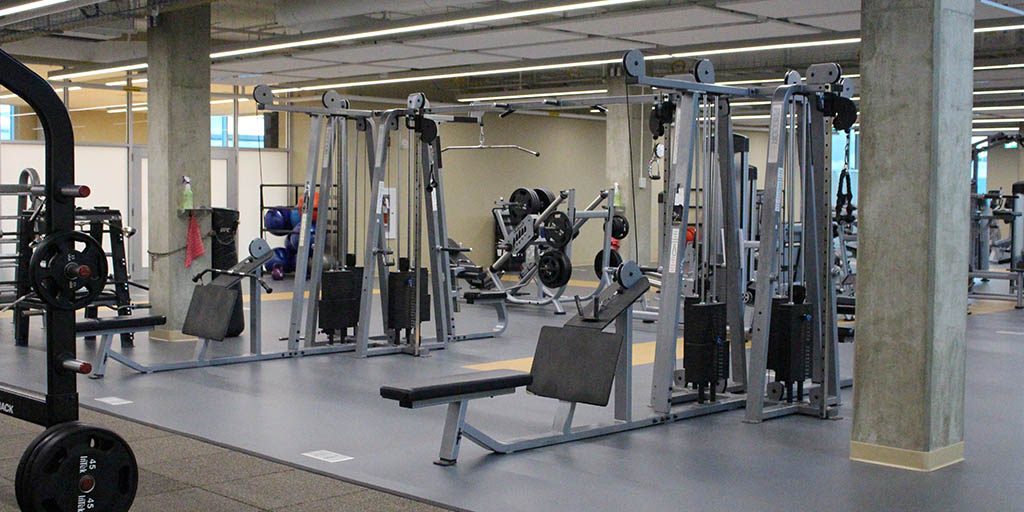Health and Fitness: To deadlift or not to deadlift? That is the question
 CREDIT: CLAUDIA BERGMAN
CREDIT: CLAUDIA BERGMANDeadlifts seem to be quite the popular form of exercise, but if not done properly, can leave painful results. The Interrobang has some tips to help make this exercise safe and less risky to do.
The deadlift is one of the most common exercises to add to your free-weight routine and is increasingly common in many group exercise classes.
It is also one of the most common to make mistakes and somewhat controversial in how it should be executed.
Let me break it down for you. First, you should have a goal or reason why, or the exercise has no starting point and progression.
Second, you need to make sure you are balancing out the exercise with working opposing muscle groups and flexibility training.
Finally, it’s always best to have a professional teach or coach you through free weight exercises to ensure proper safety, technique and execution.
Ask yourself what is your end game? With deadlifts, there could be a number of reasons including to have a stronger back, stronger core, stronger hamstrings and stronger glutes. Then there’s the reason that everyone else seems to do them, you want look or appear a certain way or nothing else seems to work for you, etc.
No matter the reason, having a goal gives you a starting point and something to work towards. When you start with deadlifts for the first time, try it with no weight or very minimal weight to assess form and flexibility.
Deadlifts require generous flexibility of the hamstrings and glutes and you can test this by sitting on the floor with your legs extended (don’t lock or overextend the knees), then reach forward and touch your toes without further bend in the knees or hunching your back. If you can’t touch your toes yet, then start with flexibility training and some very light weight dead lifts. Eventually you will get to where you need to be and progressing slowly will greatly reduce your risk for injury such as strains, sprains, back pain, etc.
I often see those who deadlift choosing to do so with a lifting belt. This may be a wise choice for some, however, if you are just starting out and go right to a heavy weight with a lifting belt, then you are setting yourself up for a weak core and a variety of other injuries.
The lifting belt is meant to assist an already strong core with lifting a heavy weight. If your core is weak and you rely on the belt too much, then when you try to perform the movement in everyday life, such as reaching over and picking something up off the floor, you may forget how to brace yourself and strain your lower back, glutes or hamstrings.
Your core is made up of your abdominals, lower to mid-back, hip flexors, glutes, quadriceps, hamstrings and many smaller muscle groups between your knees and chest.
Specifically for deadlifts, it is really important to stabilize and have strong abdominal muscles (although an argument can be made for the entire body as you really do activate everything in some way).
You can perform a deadlift on your own or pick up the basic technique in a group exercise class using barbells. Asking for help from a trainer is your best bet to ensuring safety and proper form.
Some people are afraid to ask for help at their gym because they think it costs extra, but checking your technique and giving you tips should be included with your membership. A trainer can also asses your readiness and help you map out a plan to reach your goal.
So….what is a deadlift? Well, a true deadlift is when you lift a bar from the floor and return it to the floor so that you are lifting it from a “dead” position each rep. However, we can also have the same benefits and in some cases, better benefits by bringing the weight close to the floor, without touching and standing tall again.
Start with your feet shoulder width apart and a bar on the floor in front of you. Begin to bend your knees slightly and tip forward at the hips (careful not to arc or hunch your back), keep your chest lifted slightly and don’t let your head drop lower than your hips.
Grab the bar at the bottom of the movement and keep your abdominals activated as you raise the bar while extending your legs to stand. The bar should be level with mid-thigh at the top of the movement. Slowly lower the weight either to the floor (very gently, never slam the weight as this can cause you injury and also damage to the bar), or somewhere below the knees and then repeat. If you’d like further instruction, please see us in Fanshawe’s Wellness and Fitness Centre for assistance.
Karen Nixon-Carroll is the Program Manager at Fanshawe’s Fitness Centre.














